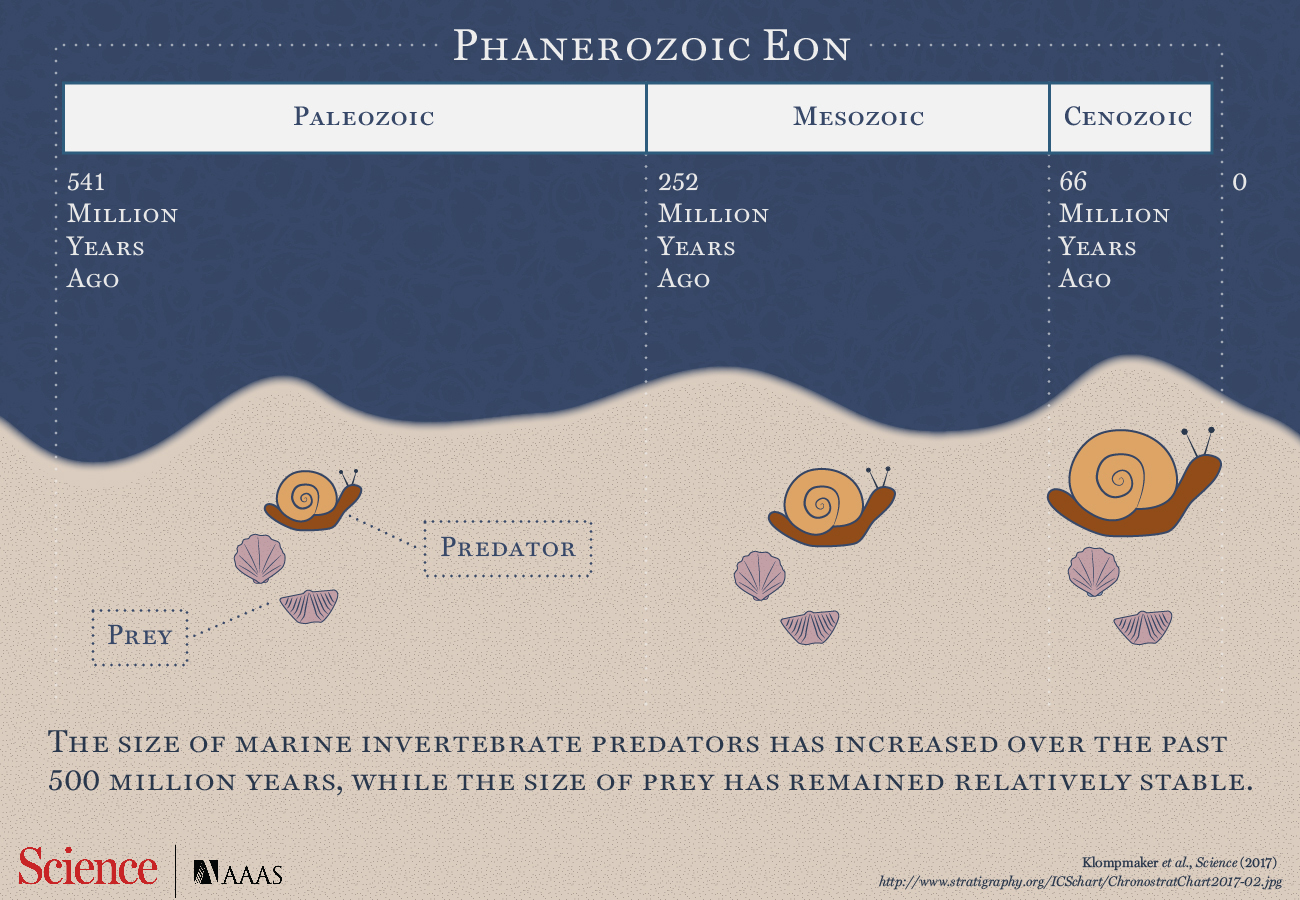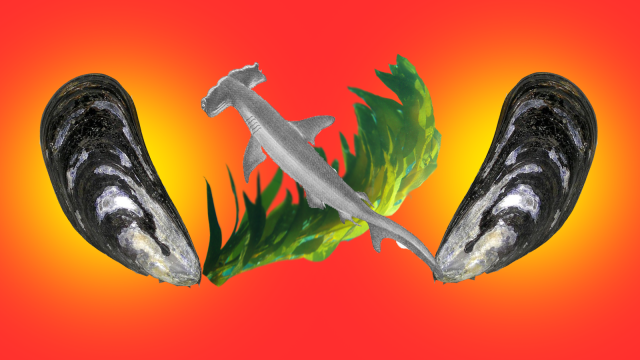The wealth gap is growing. The predators continue to improve their craft, amassing wealth as they evolve to prey on the silent lower class. But the lowly workers continue to be exploited for the fruits of their labour. It’s a situation that’s only gotten worse over time. And scientists are only starting to truly understand the scope of the inequality.
Image: Ryan F. Mandelbaum/Rainer Zenz/Wikimedia Commons/Claire Fackler, CINMS, NOAA
I’m talking about predator-prey relationships in marine ecosystems. Indeed, the history of all hitherto existing marine society is the history of predator-prey struggles. What did you think I was talking about?
A team of researchers from the United States looked at the relationship between the size of drill holes in marine shells made by drilling predators (such as snails) to create a vast picture of predator-prey relationships over the entire history of animals. They found that over all of history, the size gap between the two has grown as predators compete and larger ones win. It’s a truly groundbreaking finding.
“Many useful studies have focused on body size trends of animals through time in the last decades, but not on the size evolution of biotic interactions thus far,” Adiël Klompmaker, postdoctoral researcher from the University of California, Berkeley, told Gizmodo in an email. “The cool aspect of our study is that we can directly reconstruct predator-prey size ratios for the first time over the last ~500 million years in the history of marine life.”
The team compared a huge dataset with 556 predators and the size of the drill holes they produced, looking at data from 6943 drilled specimens. The shells didn’t show any trend in increasing or decreasing size, but the drill holes in the shells increased from .35 to 3.25mm in median diameter. And this is a trend that’s been going on for all of animal history, according to the paper published today in the journal Science.
“What’s so cool is that it’s not a question anyone had necessarily thought to ask before this,” Lauren Sallan, Assistant Professor of Earth and Environmental Science at the University of Pennsylvania told Gizmodo. “They discovered something stretching over hundreds of millions of years.”

Image: Karla Schaffer / AAAS
This drill hole trend confirms some other studies on marine predator size over time, said Klompmaker. But it’s still important for the innovative way his team is using existing data, and everyone I emailed was impressed by the study’s results and data. “In many cases of science, a technological breakthrough allows us to do something we couldn’t do before,” Jonathan Payne, Stanford University palaeobiologist told Gizmodo. “Here, the researchers came up with a clever way of quantifying an evolutionary pattern. We’ve had the tech to take this data for a long time, but haven’t had people asking the right questions.”
But this lower class isn’t completely defenceless.
“Compared to the Paleozoic era (~550 to 250 million years ago) Cenozoic prey (66 million years ago to now) are more mobile, some of them have better armour to protect themselves, and part of them hide in the bottom of the ocean,” Klompmaker said. “They seem to have responded to their predators, including drillers.”
That’s important too, pointed out Michigan State University assistant professor Phoebe Lehmann Zarnetske in an email. “Combining modern-day insights about the causes for changes in biotic interactions (e.g., increased prey mobility, environmental change) with patterns in fossil records, is a powerful way to assess how and why biotic interactions change over time,” she said.
The study does have limitations, Klompmaker pointed out. The data resolution isn’t great for individual periods. This means that the trend might be occurring for animal history, but it’s hard to say anything about individual periods, kind of like the way that a capitalist system might not oppress you every day, but income inequality is still getting worse over time.
While the predators continue evolving better ways to prey, evolution is incredible complex. Who knows what will happen in the future. “It is possible that drilling predators keep increasing in size while prey size remains stable in the next ~100 million years, said Klompmaker. Then there’s always the current mass extinction that animals today are suffering. But that might not help. “All we know is that previous mass extinctions had a limited long-term effect on the predator-prey size ratios in our study.”
So, prey, what are you waiting for? You have nothing to lose but your shells. Molluscs of All Biomes, Unite!
[Science]
